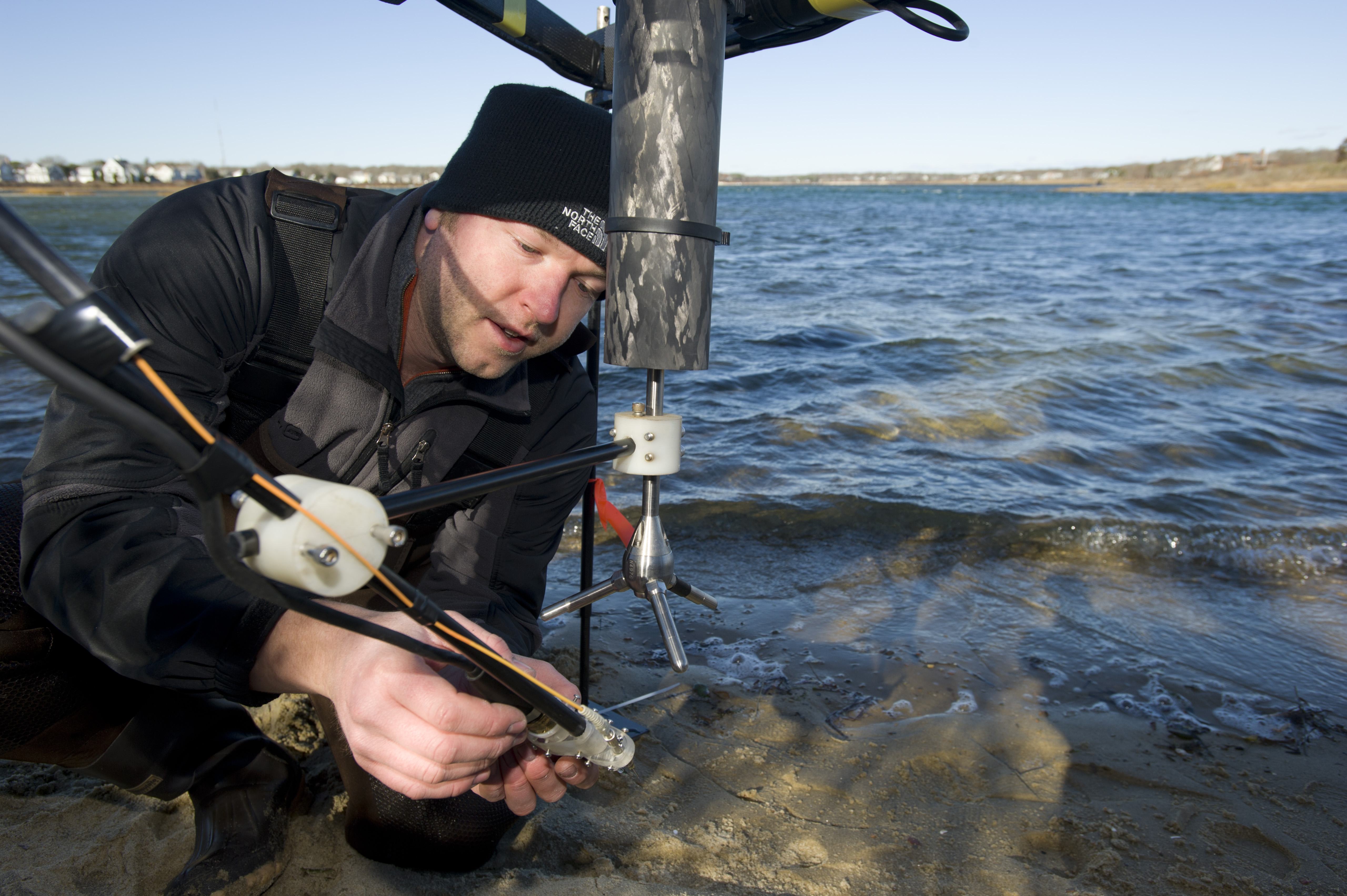Development of a Novel High-Resolution O2/H+ Eddy Covariance Technique to Study Carbon Cycling in the Coastal Ocean
Across the world about 40% of the human population lives within 100 km of the coast. Therefore, humans are tightly linked to the productivity and stability of coastal systems and their ability to mitigate anthropogenic changes. Specifically, eutrophication in coastal systems leads to increased benthic microbial mineralization that results in a net increase in the acidity or hydrogen ion (H+) concentration of sediments and the overlying water column. Combined with increases in ocean acidification and changes in carbon cycling, this yields coastal estuaries that have an uncertain future, but are also ideal for studies of ocean acidification. Carbon cycling in coastal estuaries is typically evaluated by measuring oxygen exchange, which acts as a proxy for the total biological activity in the sediments and water column. However, geochemical and microbial processes also lead to changes in the carbonate chemistry and pH of these coastal waters, which is not reflected in oxygen measurements. Therefore, to determine the sinks, sources, and transformations of carbon, oxygen, and H+ cycling in coastal systems, the determination and separation of these biochemical and geochemical fluxes is required.

photo by Tom Kleindinst
The aquatic eddy covariance technique is a relatively new technology for measuring benthic oxygen fluxes that has significant advantages over traditional techniques. The eddy covariance technique measures fluxes at a high temporal resolution over a large area without disturbing the natural flow regimes, light, or benthic surface. To evaluate the coupling between biochemical and geochemical fluxes we propose to develop a new H+ eddy covariance system to measure fluxes of acidity, which will be combined with an oxygen eddy covariance system used to measure ecosystem metabolism. We expect that this new, in-situ analysis will reveal how geochemical fluxes in combination with biological fluxes affect the net importance of shallow coastal systems in sequestering carbon. Further, the examination of H+ fluxes will reveal how coastal systems may act to ameliorate ocean acidification through the geochemical processes of carbonate precipitation and dissolution. This new H+ eddy covariance system also has a number of other important applications such as examining rates of calcification in coastal shellfish and coral species, the role of sediment dissolution in natural carbon sequestration in seagrass meadows, and how dynamic drivers such as hydrodynamics, light, and other environmental conditions influence these processes.
Funding Agencies
The National Science Foundation funded this research.
